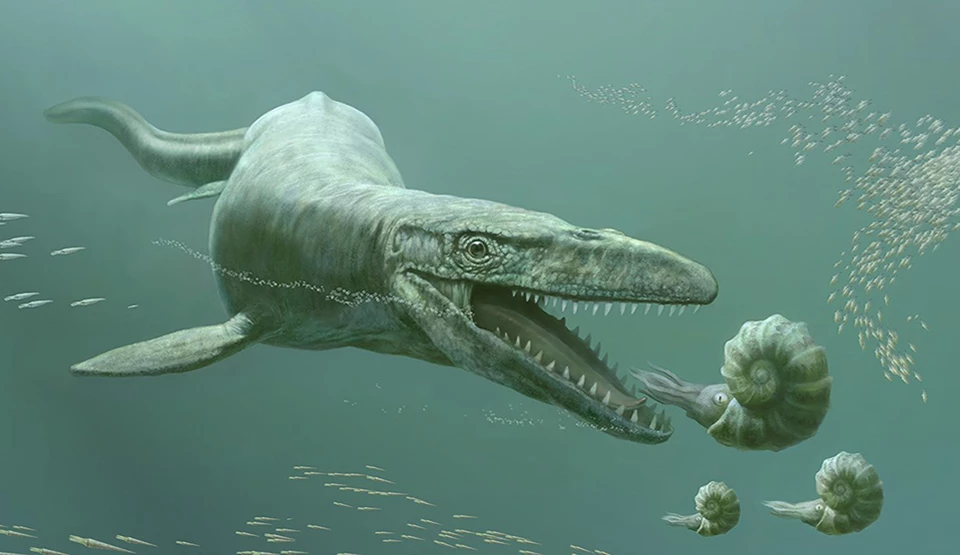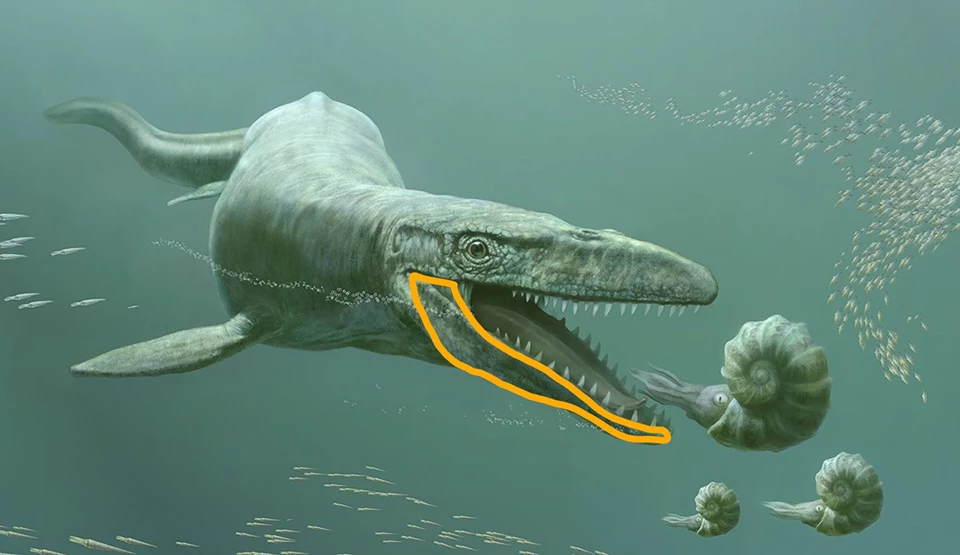Part of a series of articles titled Chaco Collections—Paleontology.
Previous: Late Cretaceous Ammonite
Next: Plesiosaur Bone Fossil
Article
Mosasaurs were top predators of the Cretaceous sea. They had a set of large, cone shaped teeth used to hunt ammonoids, an extinct relative of today’s squids. Mosasaurs are most closely related to Varanid lizards, such as the Komodo dragon and grew up to 15 meters (50 feet) long. Few fossils of mosasaurs have been discovered in New Mexico, but this crushed Mosasaur dentary (jaw) shows just how large these predators were. This fossil was found on a fallen sandstone slab near the Petroglyph Trail at Chaco Culture National Historical Park.
Footnotes:
Where are the teeth? This jaw fragment was found in isolation on the side of a fallen sandstone slab. In life, the mosasaur’s conical teeth probably sat in these dark grooves(?). These specific teeth have not yet been found, but lone mosasaur teeth have been found eroding from sandstone in other parts of Chaco.
Under pressure: A lot can happen to change the original shape of an organism. Rapid burial is a key part in fossilization, but this process can also crush the organism due to intense pressure. Paleontologists must be detectives and look for clues that help them imagine what the creature looked like even when their remains are broken or incomplete.
Fossil Remains


Left image
Mosasaur feeding on ammonites.
Right image
Outlined in orange is an approximation of the fossil that was preserved.
Credit: Illustration by Karen Carr.
Part of a series of articles titled Chaco Collections—Paleontology.
Previous: Late Cretaceous Ammonite
Next: Plesiosaur Bone Fossil
Last updated: April 30, 2021